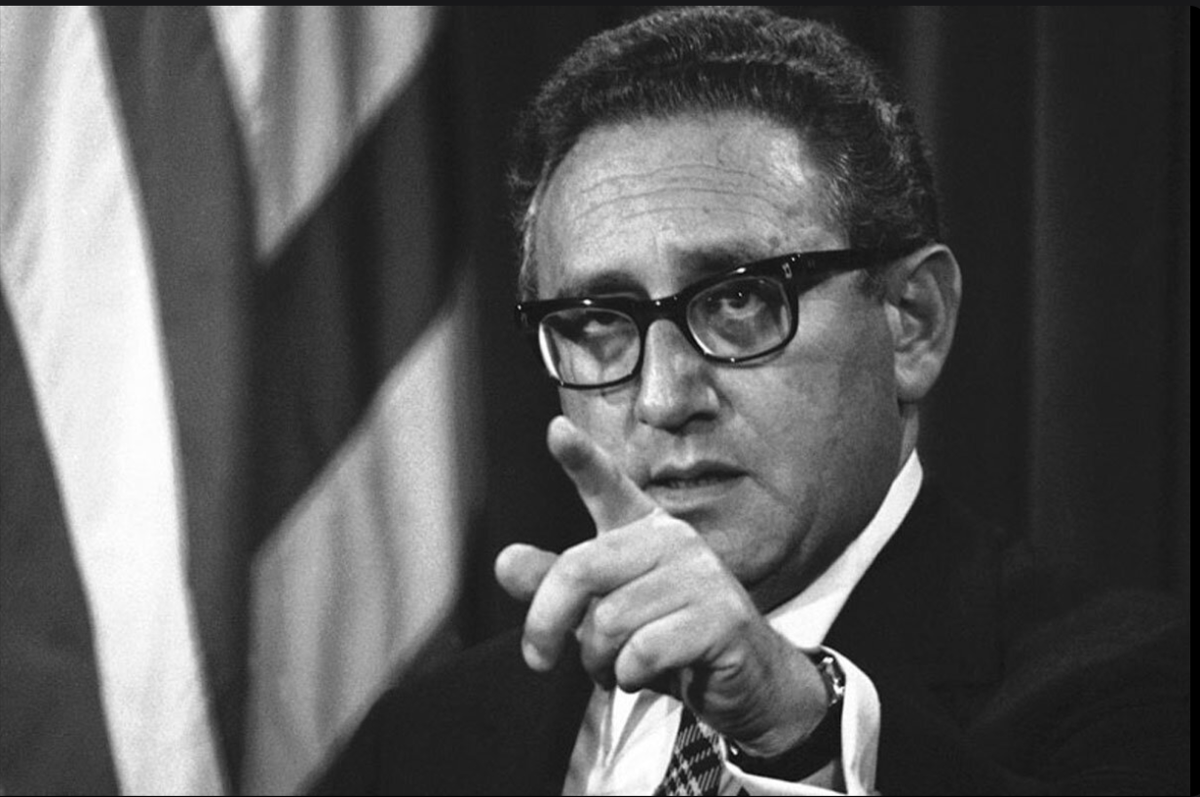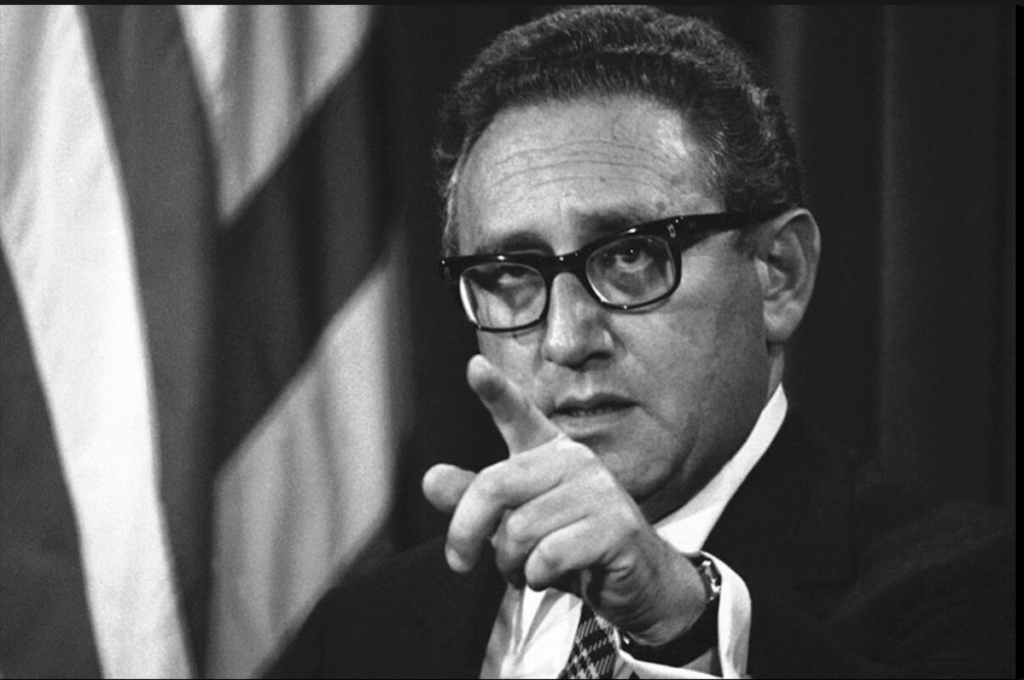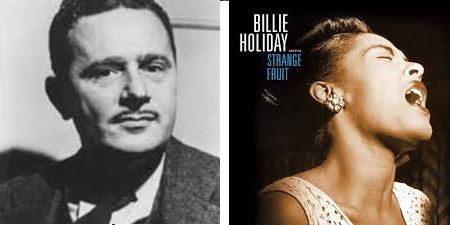Features
From Art to Diplomacy: How Jewish Leaders and Thinkers Shaped History and Modernity

In this article, we delve into the impact of Jewish public figures on the global stage, exploring their role in shaping political landscapes and cultural events
The Impact of Jewish Public Figures on World Politics and Culture
From prominent politicians to renowned artists, Jews have made significant contributions that have shaped our world.
With their diverse backgrounds and experiences, Jewish public figures have played a key role in promoting social change, advocating for human rights, and shaping cultural narratives. Their influence can be seen in a variety of fields, such as literature, art, music, and film, where Jewish artists have left an indelible mark on creativity and expression.
By exploring the contributions of Jewish public figures, together with the plinko game team, we aim to shed light on the enormous impact they have had on shaping our world.
Historical Background: The Role of Jewish Intellectuals and Leaders Throughout History
The historical narrative of Jewish intellectuals and leaders is rich and complex, woven into the fabric of many societies across the globe. From ancient times, Jews have contributed to various fields, including philosophy, science, and politics. Figures such as Maimonides and Spinoza have significantly influenced Western thought through their philosophical writings. These intellectuals not only shaped Jewish culture but also left a lasting mark on global intellectual history, challenging prevailing norms and encouraging critical thinking.
The struggle for social justice and human rights has often found expression through Jewish leaders. Throughout history, Jews have faced persecution and discrimination, which has fueled their commitment to advocating for justice. The Jewish experience of diaspora has led to a unique perspective on oppression and resilience, enabling Jewish leaders to become champions for the marginalized. Their contributions to movements for civil rights and social justice have been instrumental in shaping contemporary political landscapes, particularly in the United States and Europe.
Moreover, the integration of Jewish intellectuals into broader societal frameworks has fostered cross-cultural dialogues. Jewish figures have often acted as bridges between cultures, promoting understanding and collaboration. This historical backdrop sets the stage for examining the specific contributions of contemporary Jewish public figures in politics and culture, highlighting how their legacy continues to influence the world today.
Jewish Public Figures in Politics: Notable Examples and Their Impact on Global Affairs
Jewish politicians have played pivotal roles in shaping global politics, often taking on leadership positions that have allowed them to influence significant policy decisions.

One notable example is Henry Kissinger, who served as the United States Secretary of State and National Security Advisor. Kissinger’s approach to foreign policy, particularly during the Cold War, emphasized diplomacy and realpolitik. His efforts in negotiating peace agreements, such as the Paris Peace Accords, demonstrate the power of Jewish public figures in navigating complex international relations.

Another influential figure is Ruth Bader Ginsburg, the late Supreme Court Justice known for her staunch advocacy for gender equality and civil rights. Ginsburg’s legal opinions and dissents have had a profound impact on American jurisprudence, often pushing the boundaries of what is considered constitutional. Her legacy as a champion for women’s rights and social justice continues to inspire generations, illustrating the power of Jewish individuals to drive change within the legal and political arenas.
Additionally, figures like Benjamin Netanyahu have made significant contributions to political discourse on a global scale. As the Prime Minister of Israel, Netanyahu has been at the helm during crucial moments in Israeli history, navigating the complexities of Middle Eastern politics. His approach to security and foreign policy has sparked both support and controversy, reflecting the intricate dynamics of Jewish leadership in geopolitics. These examples underscore the diverse roles Jewish public figures have played in influencing global affairs, shaping policies that resonate far beyond their immediate contexts.
Jewish Public Figures in Culture: Contributions to Art, Literature, Music, and Entertainment
The cultural contributions of Jewish public figures are equally profound, spanning various artistic fields and leaving an indelible mark on global culture. In literature, authors like Philip Roth and Elie Wiesel have explored themes of identity, memory, and the human condition through their poignant narratives. Roth’s exploration of Jewish identity in America challenged stereotypes and opened dialogues about cultural belonging, while Wiesel’s memoirs on the Holocaust serve as powerful reminders of resilience and the importance of remembrance.

In the realm of music, Jewish artists have made significant contributions that transcend genres. From the classical compositions of Leonard Bernstein to the revolutionary sounds of Bob Dylan, Jewish musicians have shaped the musical landscape. Bernstein’s work in classical music and Broadway has left a legacy of artistic excellence, while Dylan’s lyrics reflect a deep engagement with social issues and human emotions. These artists not only entertain but also provoke thought and inspire social change through their craft.
Furthermore, the film industry has been significantly influenced by Jewish filmmakers and actors, with figures like Steven Spielberg and Natalie Portman leading the charge. Spielberg’s films often address complex moral dilemmas and historical narratives, while Portman’s work as an actress and director champions diverse stories and perspectives. Through their storytelling, these artists contribute to cultural discourse, emphasizing the importance of empathy and understanding in an increasingly divided world. The influence of Jewish public figures in culture is a testament to their creativity and commitment to social issues, enriching the global cultural landscape.
Controversies and Criticisms: Examining the Debates Surrounding Jewish Influence
Despite the significant contributions of Jewish public figures, their influence has not been without controversy. Debates surrounding Jewish influence often arise, particularly in the context of politics and media. Critics sometimes allege that Jewish individuals hold disproportionate power in various sectors, leading to accusations of conspiracy and manipulation. These narratives can perpetuate harmful stereotypes and contribute to anti-Semitic sentiment, highlighting the need for critical examination of such claims.
It is essential to differentiate between legitimate discussions about influence and the perpetuation of conspiracy theories that seek to scapegoat Jewish communities. Many Jewish public figures have risen to prominence through hard work, talent, and advocacy, rather than through nefarious means. Acknowledging their contributions while recognizing the complexities of their influence can foster nuanced discussions that combat anti-Semitism and promote understanding.
Moreover, the portrayal of Jewish individuals in media and popular culture can contribute to the reinforcement of stereotypes. It is crucial to critically engage with these representations and advocate for more diverse and accurate portrayals of Jewish life. Through education and dialogue, society can challenge misconceptions and celebrate the multifaceted contributions of Jewish public figures to politics, culture, and beyond.
The Jewish Diaspora and Its Impact on Global Networks
The Jewish diaspora has created a rich tapestry of experiences and connections that have influenced global networks. Historically, Jews have migrated to various regions, often forming tight-knit communities that have contributed to local cultures while maintaining their unique identity. This ability to adapt and thrive in diverse environments has enabled Jewish individuals to forge important connections across borders, creating a network of influence that extends beyond geographical boundaries.
The diaspora has facilitated the exchange of ideas, fostering a global dialogue that has enriched cultural and political landscapes. Jewish communities around the world often engage in philanthropy and social activism, addressing pressing issues such as poverty, education, and human rights. Organizations like the Jewish Federation and various international NGOs reflect the commitment of the Jewish diaspora to contribute positively to society, promoting social justice and intercultural understanding.
Furthermore, the interconnectedness of the Jewish diaspora has allowed for a robust exchange of knowledge and resources. Jewish public figures often draw on their diverse backgrounds and experiences, leveraging their networks to advocate for change on a global scale. This collaborative approach underscores the importance of community and solidarity in addressing complex challenges, highlighting the enduring influence of the Jewish diaspora in shaping global networks.
Case Studies: Examining Specific Individuals and Their Contributions
To illustrate the profound influence of Jewish public figures, we can examine specific case studies that highlight their contributions across various domains. One notable example is the late Shimon Peres, who served as the President and Prime Minister of Israel. Peres was a visionary leader known for his efforts in promoting peace in the Middle East. His role in the Oslo Accords exemplifies the potential for dialogue and compromise in resolving longstanding conflicts.
In the realm of art, Marc Chagall stands out as a revolutionary painter whose works encapsulate the essence of Jewish identity and culture. Chagall’s unique style, characterized by vibrant colors and dreamlike imagery, reflects his experiences as a Jewish artist navigating the complexities of the 20th century. His contributions to modern art have influenced generations of artists and continue to resonate in contemporary creative expressions.
Another significant figure is Ruth Messinger, a prominent advocate for social justice and former president of American Jewish World Service. Messinger’s work in international development highlights the intersection of Jewish values and global humanitarian efforts. Through her leadership, she has raised awareness about issues such as poverty and human rights, demonstrating the capacity of Jewish public figures to effect change on a global scale. These case studies underscore the diverse contributions of Jewish individuals, illustrating how their legacies continue to shape our world today.
The Power of Jewish Organizations and Lobbying Groups
Jewish organizations and lobbying groups have played a vital role in advocating for Jewish interests and promoting social change. Organizations such as the Anti-Defamation League (ADL) and the American Israel Public Affairs Committee (AIPAC) have been instrumental in shaping public policy and fostering community engagement. These organizations work tirelessly to combat anti-Semitism, promote civil rights, and strengthen ties between Israel and the United States.
The influence of Jewish lobbying groups extends beyond domestic politics, impacting international relations as well. AIPAC, for instance, has been a significant player in advocating for strong U.S.-Israel relations, leveraging political connections to promote policies that align with Jewish interests. The effectiveness of these organizations highlights the importance of collective action and advocacy in achieving political goals and addressing pressing social issues.
Moreover, Jewish organizations often serve as platforms for community engagement and activism. They provide resources for education, cultural programming, and social services, fostering a sense of community and belonging among Jewish individuals. By mobilizing collective resources and voices, these organizations play a crucial role in amplifying the contributions of Jewish public figures and advocating for diverse perspectives within the broader societal context.
Debunking Myths and Stereotypes: Separating Fact from Fiction
Addressing the myths and stereotypes surrounding Jewish influence is essential for fostering a more accurate understanding of their contributions. Misconceptions about Jewish individuals often stem from historical prejudices and societal biases, which can distort perceptions and promote harmful narratives. It is crucial to engage in open conversations that challenge these stereotypes and promote a more nuanced understanding of Jewish identity and influence.
Many myths surrounding Jewish individuals are rooted in conspiratorial thinking, suggesting that Jews exert undue control over various sectors, including finance, media, and politics. These narratives often lack empirical evidence and serve to scapegoat Jewish communities for broader societal issues. By critically examining these claims and promoting factual information, we can combat anti-Semitism and foster a more inclusive dialogue about the contributions of Jewish public figures.
Education plays a vital role in debunking myths and stereotypes. By promoting awareness of Jewish history, culture, and achievements, we can cultivate understanding and empathy. Initiatives that celebrate Jewish contributions to society can help counteract negative narratives and highlight the diverse perspectives within the Jewish community. Ultimately, fostering a culture of dialogue and education is essential for promoting inclusivity and understanding in our increasingly interconnected world.
Conclusion
The influence of Jewish public figures on global politics and culture is a testament to their resilience, creativity, and commitment to social justice. From shaping political landscapes to enriching cultural narratives, Jewish individuals have made significant contributions that continue to resonate today. Their diverse backgrounds and experiences have enabled them to navigate complex societal challenges, advocating for change and promoting understanding across cultures.
As we reflect on the ongoing influence of Jewish public figures, it is crucial to recognize the importance of diverse perspectives in shaping our world. The contributions of Jewish individuals serve as a reminder of the power of collaboration and collective action in addressing pressing issues. By embracing diversity and promoting dialogue, we can foster a more inclusive society that values the contributions of all individuals, regardless of their background.
In conclusion, the legacy of Jewish public figures is multifaceted and enduring. Their impact on global politics and culture underscores the importance of recognizing and celebrating diverse voices. By continuing to explore and appreciate these contributions, we can foster a deeper understanding of our shared human experience and work towards a more just and equitable world for all.
Features
A People and a Pulse: Jewish Voices in Jazz and Modern Music

By MARTIN ZEILIG Jazz history is usually told through its most iconic names — Armstrong, Ellington, Parker, Davis — yet running alongside that familiar story is another, often under‑acknowledged one: the deep and enduring contribution of Jewish musicians, bandleaders, composers, and cultural intermediaries.
From the moment jazz emerged at the turn of the 20th century, Jews were not simply observers but active shapers of the music and the industry around it. Their influence — artistic, entrepreneurial, and cultural — has been both significant and, in many respects, disproportionately large. Jews and Jazz (171 pg. $18.75 US) a self‑published work by Laurence Seeff, brings this parallel narrative into sharp, affectionate focus.
Seeff is an ideal guide.
Born in London in 1951, he built a career that moved from statistics to energy policy in Paris, from financial markets at Bloomberg to corporate training in the City of London, all while writing poetry, songs, and humorous verse. Today he lives in Israel, where he continues to write, perform, learn Ivrit, and enjoy life with his large family. Through all these chapters runs a constant passion for jazz — a passion sparked more than fifty‑five years ago when he first heard Terry Lightfoot’s Jazzmen in a Bournemouth pub.
His writing blends clarity, humour, and genuine love for the music and the people who made it.
The musicians he profiles often came from immigrant families who brought with them the musical DNA of Eastern Europe — the cadences of synagogue chant, the urgency of klezmer, the cultural instinct for learning and artistic expression. When these sensibilities met the African American genius of early jazz, the result was a remarkable creative fusion.
Some figures, like Chico Marx, are better known for comedy than musicianship, yet Seeff reminds us that Chico was a serious pianist whose jazz‑inflected playing appeared in every Marx Brothers film and whose orchestra launched young talents like Mel Tormé. Others — Abe Lyman, Lew Stone, and Oscar Rabin — shaped the dance‑band era on both sides of the Atlantic.
Canadian readers will be pleased to find Morris “Moe” Koffman included as well: the Toronto‑born flautist and saxophonist whose “Swinging Shepherd Blues” became an international hit and whose long career at the CBC helped define Canadian jazz.
Seeff also highlights artists whose connection to jazz is more tangential but culturally revealing. Barbra Streisand, for example — a classmate and choir‑mate of Neil Diamond at Erasmus Hall High School — was never a natural jazz singer, yet her versatility allowed her to step into the idiom when she chose.
She opened for Miles Davis at the Village Vanguard in 1961 and, nearly half a century later, returned to the same club to promote Love Is the Answer, her collaboration with jazz pianist Diana Krall. Her contribution to jazz may be limited, but her stature as one of the greatest singers of all time is unquestioned.
Neil Diamond, too, appears in these pages.
Though not a jazz artist, he starred — with gusto, if not great acting finesse — in the 1980 remake of The Jazz Singer, 53 years after Al Jolson’s original. The film was not a success, nor was it truly a jazz picture, but its title and its star’s Jewish identity make it part of the cultural tapestry Seeff explores.
Diamond and Streisand recorded together only once, in 1978, on “You Don’t Bring Me Flowers,” a reminder of the long‑standing artistic ties between them.
Mel Tormé, by contrast, was deeply rooted in jazz. Nicknamed “The Velvet Fog,” he was a prodigy who sang professionally at age four, wrote his first hit at sixteen, drummed for Chico Marx, and recorded with Benny Goodman and Artie Shaw. Ethel Waters once said he was “the only white man who sings with the soul of a black man.” His story exemplifies the porous, collaborative nature of jazz.
Seeff also includes non‑Jewish figures whose lives intersected meaningfully with Jewish culture. Frank Sinatra — perhaps the greatest crooner of them all — was a steadfast supporter of Jewish causes, from protesting during the Holocaust to raising funds for Israel Bonds and the Hebrew University. His multiple visits to Israel, including a major concert in Jerusalem in 1975, underscore the depth of his connection.
Danny Kaye earns his place through his close work with Louis Armstrong, his pitch‑perfect scat singing, and his starring role in The Five Pennies, the biopic of jazz cornetist Red Nichols. Though not a jazz musician per se, his performances radiated a genuine feel for the music.
A later generation is represented by Harry Connick Jr., whose Jewish mother and New Orleans upbringing placed him at the crossroads of cultures. A prodigy who played publicly at age five, he went on to become one of the most successful jazz‑influenced vocalists of his era, with ten number‑one jazz albums.
Even Bob Dylan appears in Seeff’s mosaic — another reminder that Jewish creativity has touched every corner of modern music, sometimes directly through jazz, sometimes through the broader cultural currents that surround it.
Taken together, the concise portraits in Jews and Jazz form a lively, engaging mosaic — a celebration of creativity, resilience, and cross‑cultural exchange. They show how Jewish musicians helped carry jazz from vaudeville and dance halls into swing, bebop, cool jazz, pop, rock, and film music.
They remind us that jazz, at its heart, is a meeting place: a space where people of different backgrounds listen to one another, learn from one another, and create something larger than themselves.
For further information, contact the author at the following email address: laurenceseeff@yahoo.co.uk
Features
Jews in Strange Places

By DAVID TOPPER The Jewish contribution to 20th century popular music is well known. From Jerome Kern through to Stephen Sondheim, Jews played major roles as both composers and lyricists in the so-called Great American Songbook. (An exception is Cole Porter.) It continued in Musical Theatre throughout the rest of the century.
One very small piece of this story involves what Time magazine in the December 1999 issue called “the tune of the century.” First recorded sixty years before that, it is the powerful and haunting tune called “Strange Fruit,” which is about the lynching of black people in the southern USA. First sung by Billie Holiday in 1939, it became her signature tune.
So, why do I bring this up? Because there is a multi-layered Jewish connection to this song that is worth recalling, which may not be known to many readers.
Let’s start with the lyrics to “Strange Fruit,” which are the essence of this powerful piece:
Southern trees bear strange fruit,Blood on the leaves and blood at the root,Black bodies swinging in the southern breeze,Strange fruit hanging from the poplar trees.Pastoral scene of the gallant south,The bulging eyes and the twisted mouth,Scent of magnolias, sweet and fresh,Then the sudden smell of burning flesh.Here is fruit for the crows to pluck,For the rain to gather, for the wind to suck,For the sun to rot, for the trees to drop,Here is a strange and bitter crop.
Before becoming lyrics in a song, this poem stood alone as a potent statement about the lynchings still taking place throughout the American South at the time. The strong metaphorical imagery never explicitly mentions the lynching, which adds to the poetic power of this poem. Standing alone, I believe it’s an important protest verse from the 20th century.
Searching it on the internet, you may find the author listed as Lewis Allan. But that’s not his real name. “Lewis Allen” is the often-used pen name of Abel Meeropol, a Jewish High School teacher from the Bronx in New York. He and his wife, Anne (nee Shaffer), had two stillborn children with those names – a fact that adds a poignant element to this story.
The origin of the poem for Abel was a photograph he had seen of a lynching of black men in the South. I have seen such images, possibly even the one Abel saw: for example, a sepia photograph of two black men hanging from a long tree limb, and a large crowd of white people below (men, women and even children!), most seeming dressed in their Sunday best (some men with straw hats) looking up and gawking at the sight, some with smiles on their faces – as if attending a festive spectacle. Like Abel, I felt repelled by the picture: it turned my stomach. This communal display of horrific cruelty gave me a glimpse into Abel’s mind, and I understood how it compelled him to write about it. He thus wrote the poem, and it was published in a teacher’s magazine in 1937.
Being a songwriter too, in 1938 Abel added a melody and played it in a New York club he often attended. But here’s where this story’s documentation gets contradictory, depending upon who is recalling the events. The club owner knew Billie Holiday, and he showed the song to her. What her initial response was, we cannot know for sure. But we do know that in a relatively short time, she added it to her repertoire. It eventually became her signature tune. She initially sang it in public, but because of its popularity among her fans, there was pressure to record it too.
There were initial rejections from recording companies because of the controversial content. But Commodore Records took a chance and pressed the first recording in April 1939. This was the same year the movie “Gone with the Wind” came out; it was steeped in racial stereotyping. It was also sixteen years before Rosa Parks refused to give up her seat on a bus in Montgomery, Alabama.
As a record, the song obviously reached a large audience. Since the content was about racism, the song was seen as politically radical; not surprisingly, many radio stations banned it from the airwaves.
Furthermore, it’s also not surprising that Abel, a schoolteacher, was called to appear before a committee of New York lawmakers who were looking for communists in the schools. Possibly they were surprised to find that the poem and the song were written by a white man – and a Jew to boot. In particular, they wanted to know if he was paid by the Communist Party to write this song. He was not. And, in the end, they let him go. But shortly thereafter he quit his teaching job.
This took place in 1941 and was a precursor to the continued American obsession with communism into the 1950s, under Senator Joe McCarthy.
Indeed, that episode had an impact on Abel and Anne too. In 1953 Julius and Ethel Rosenberg were convicted of giving information about nuclear science to the Soviet Union, and they were the first married couple to be executed in the electric chair. They left two sons, Michael (age 10) and Robert (age 6). Apparently, immediate family members were reticent to get involved with the boys, possibly afraid of being accused of sympathizing with communism.
Enter Abel and Anne. Without a moment’s hesitation they stepped in, taking and raising the boys. As Michael and Robert Meeropol they eventually went on to become college professors – and naturally were active in social issues. Anne died in 1973. Abel died in 1986 in a Jewish nursing home in Massachusetts, after a slow decline into dementia. Long before that, Billie Holiday died in 1959, ravaged by the drug addition that took her life at forty-four years of age.
See why I called this a multi-layered Jewish story that’s worth telling?
To hear Billie Holiday singing “Strange Fruit” click here: Strange Fruit
Features
Is This the End of Jewish Life in Western Countries?

By HENRY SREBRNIK “Globalize the Intifada” has been the chant echoing through streets since October 7th, 2023. It was never a metaphor, and we now see the gruesome results across the western world, from Australia to Canada: the rise of groups of large, active networks of Islamist and anti-Zionist organizations.
Jews in the West are discovering that the nations they defended, enriched, and profoundly shaped have become increasingly inhospitable. After the Holocaust, explicit Jew-hatred became unfashionable in polite society, but the impulse never disappeared. The workaround was simple: separate Zionism from Judaism in name, then recycle every old anti-Jewish trope and pin it on “the Zionists.”
We have seen the full legitimization of genocidal anti-Zionism and its enthusiastic adoption by large segments of the public. The protests themselves, as they began immediately on October 7th, were celebrations of the Hamas massacres. The encampments, the building occupations, the harassment campaigns against Jewish students, the open calls for intifada, the attacks on Jews and Jewish places have become our new norm. History shows us that antisemitism does not respond to reason, incentive or the honest appeals of the Jewish community.
Outside the United States, there is no Western political establishment with either the will or the capability to address this problem, let alone reverse its growth. I’m sorry to say this, but the future of Western Europe, Canada, Australia, and New Zealand is likely to be increasingly Jew-free.
Today, police stand and watch mobs chant for Israel’s destruction, call for the genocide of its people, harass visibly Jewish citizens, and drive antisemitic intimidation deep into urban life. They now believe their job is to enforce the law only if it does not risk upsetting violent constituencies. This makes Jews expendable, because defending them risks confrontation. This was very clear in the Bondi Beach massacre.
Jews are again donning caps instead of kippot, dressing generically with no cultural markers, and avoiding even a tote bag with Hebrew on it. A corrosive creep toward informal segregation in retail and service sectors is occurring, as Jewish customers report being refused service. A mezuzah hanging from a rideshare mirror leads to cancellations. When Jews express frustration, they are accused of exaggeration or attempting to suppress criticism of Israel. Jewish fear is not treated as a real problem.
“Jews Are Being Sent Back into Hiding,” the title of a Dec. 15 article in the New York Free Press by David Wolpe and Deborah Lipstadt, asserts that the attacks on Jews, including physical assaults, social media campaigns and, most tragically, the recent murders in Australia, are part of a purposive campaign designed to make Jews think twice about gathering with other Jews, entering a synagogue, going to kosher restaurants, putting a mezuzah on the doorpost of their apartments or dorm rooms, or wearing a Jewish star around their necks.
“We know of no one who would consider giving a niece, nephew, grandchild, or young friend a Jewish star without first asking permission of their parents,” they write. The unspoken, and sometimes spoken, question is: “Might wearing a star endanger your child’s well-being?”
Recently, a prominent American rabbi was entering a Target store in Chicago with her grandson, whom she had picked up from his Jewish day school. As they walked into the store the 10-year-old reached up and automatically took off his kippah and put it in his pocket. Seeing his grandmother’s quizzical look, he explained: “Mommy wants me to do that.”
Borrowing a phrase from another form of bigotry, they contend that Jews are going “back into the closet.” No public celebration of Hanukkah took place in 2025 without a significant police presence. Some people chose to stay home.
Lipstadt and Wolpe know whereof they speak. They are respectively a professor of history and Holocaust studies who served as the Biden administration’s ambassador tasked with combating antisemitism, the other a rabbi who travels to Jewish communities throughout the world, and who served on Harvard’s antisemitism task force in the aftermath of the October 7, 2023 pogrom.
What the world has seen over the past two years is a continual, often systematic attempt to terrorize Jews. When political leaders fail to condemn rather than merely “discourage” chants of “globalize the intifada,” we are seeding the ground for massacres like the Hannukah one in Sydney.
If each Jewish holiday will now be seen by antisemites as an opportunity for terror, then the prognosis for diaspora Jewry is bleak. There will be fewer public events, more alarms, more bag checks at doors; there will have to be more security and more police. Unless things change, Jewish life in the diaspora will become more sealed off from the larger society.
Why has this failure come about? Confronting antisemitism, stopping the mobs, challenging the activists, and disciplining antisemitic bureaucrats all carry electoral risk for politicians; Jews are demographically irrelevant, especially compared with Muslim voters, with the U.S. being the only partial exception.
There are those who suggest Jews stop donating funds to educational and other institutions that have turned against us. At this point, I doubt very much that withdrawing dollars will have an impact. For every dollar withdrawn, there will be 100 from Qatar and other sources in its place.
Throughout history, the way a society treats its Jews predicts its future with unerring accuracy. If Jews leave, it will be because a civilization that will not defend its Jews will also defend next to nothing and may itself not survive.
Henry Srebrnik is a professor of political science at the University of Prince Edward Island

